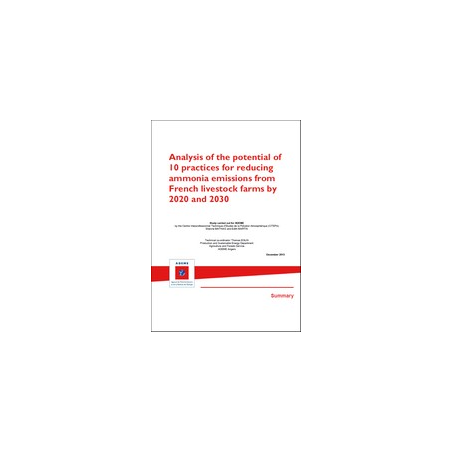Analyse du potentiel de 10 actions de réduction des émissions d'ammoniac des élevages français aux horizons 2020 et 2030
Synthèse d'expertise
Mis en ligne le : 30/06/2023

Summary
Documents associés
Synthèse d'expertise
Mis en ligne le : 30/06/2023